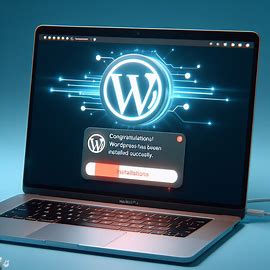
WordPress stands as a stalwart in the realm of website creation, offering unparalleled flexibility, customization, and scalability to millions of users worldwide. If you’re venturing into website development in 2024, installing WordPress on your hosting platform is the crucial first step towards establishing your online presence. In this exhaustive guide, we’ll navigate you through the process of installing WordPress on your hosting service, covering every intricate detail from selecting the optimal hosting provider to configuring WordPress settings for optimal performance and security.
Selecting the Right Hosting Provider
Choosing a reliable hosting provider lays the foundation for a seamless WordPress installation experience. Here’s what you should consider:
1. Performance and Uptime Guarantees
Opt for a hosting provider that boasts robust infrastructure and guarantees minimal downtime to ensure your website remains accessible to visitors at all times.
2. Customer Support Quality
Prioritize hosting providers renowned for their responsive customer support teams, capable of providing timely assistance and troubleshooting guidance whenever needed.
3. Server Resources and Scalability
Assess your hosting provider’s resource allocation and scalability options to accommodate your website’s growth and handle increased traffic without compromising performance.
Step-by-Step Guide to Installing WordPress
1. Sign Up for Hosting
Kickstart your WordPress journey by signing up for a hosting plan that aligns with your requirements and budget. Look for providers offering one-click WordPress installation tools for added convenience.
2. Access Hosting Control Panel (cPanel)
Upon signing up, log in to your hosting control panel, typically accessible via cPanel or a similar interface. Locate the “WordPress” or “Softaculous” icon, commonly used for streamlined WordPress installations.
3. Launch WordPress Installer
Initiate the WordPress installation process by clicking on the designated installer icon. You’ll be prompted to specify the domain where you wish to install WordPress and designate a directory if opting for a subfolder installation.
4. Configure WordPress Settings
Enter essential details such as the site name, description, admin username, password, and email address. Ensure the admin credentials are robust to fortify your WordPress security posture.
5. Complete Installation
Execute the installation by clicking the “Install” button. The installer will orchestrate the creation of a new WordPress database, configure requisite files, and seamlessly install WordPress on your hosting server.
6. Access WordPress Dashboard
Access your WordPress admin dashboard by navigating to the designated login page (typically yourdomain.com/wp-admin) and entering the admin credentials specified during installation. You’re now ready to embark on your WordPress journey!
Essential WordPress Configuration Settings
1. Permalinks
Navigate to the “Settings” tab within the WordPress dashboard and select “Permalinks.” Choose an SEO-friendly permalink structure that aligns with your content hierarchy and enhances search engine visibility.
2. Themes and Plugins
Explore the extensive library of WordPress themes and plugins to personalize your website’s appearance and functionality. Opt for themes that resonate with your brand identity and plugins that augment your site’s capabilities.
3. Site Settings
Fine-tune additional site settings under the “Settings” tab to refine your WordPress setup. Configure site title, tagline, timezone, and privacy preferences to ensure coherence and professionalism across your website.
Best Practices for WordPress Security
1. Regular Updates
Stay vigilant by regularly updating WordPress core, themes, and plugins to patch vulnerabilities and shield your website from potential security threats. Enable automatic updates to streamline the process and fortify your defenses.
2. Strong Passwords
Fortify your WordPress security framework by employing robust, unique passwords for admin accounts, FTP/SFTP credentials, and database access. Leverage password management tools for seamless password generation and storage.
3. Security Plugins
Bolster your website’s security posture with the integration of reputable security plugins such as Wordfence, Sucuri Security, or iThemes Security. These plugins offer comprehensive features like firewall protection, malware scanning, and brute-force attack mitigation.
Conclusion
Embarking on the WordPress journey in 2024 entails mastering the art of WordPress installation on your hosting platform. By adhering to the meticulous steps outlined in this comprehensive guide and implementing best practices for WordPress configuration and security, you’re poised to unleash the full potential of your WordPress-powered website. Whether you’re a novice navigating the digital landscape or an adept developer seeking to elevate your online presence, WordPress remains the quintessential tool for crafting captivating and dynamic websites. Harness its power, explore its endless possibilities, and embark on a transformative journey into the realm of web development.
Leave a Reply